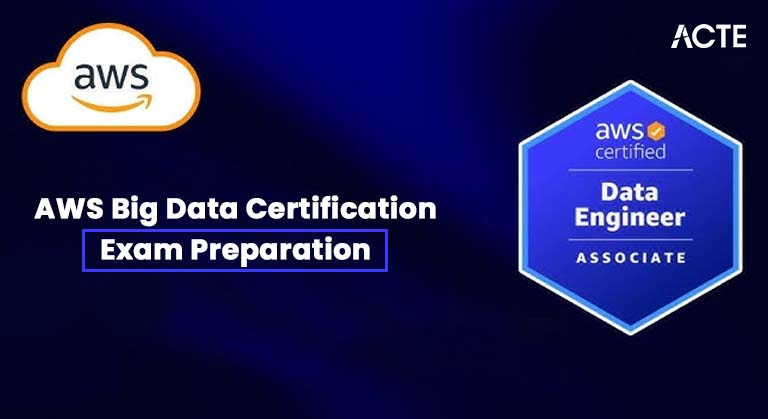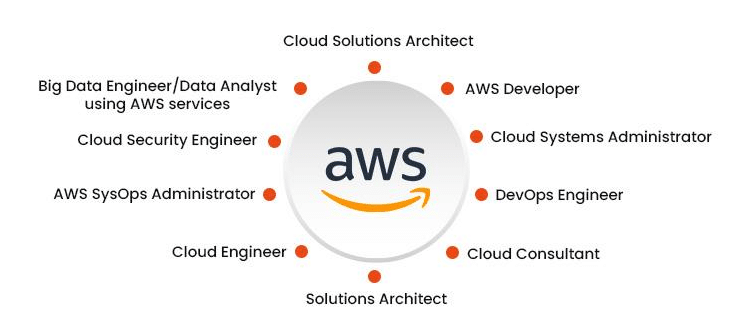
- Introduction to AWS Big Data Certification
- Who Should Take the AWS Big Data Certification?
- Exam Format and Structure
- Key Exam Topics and Domains
- Learning AWS Data Analytics Services
- Best Study Resources and Training Materials
- Hands-on Labs and Practical Experience
- Tips for Passing the Exam on the First Attempt
- Future Trends in AWS Data Analytics
- Conclusion
Introduction to AWS Big Data Certification
As cloud computing grows, the demand for skilled professionals who can manage and analyze large volumes of data is increasing. AWS Big Data Certification is designed to validate the skills and expertise of individuals working in data analytics and big data solutions on Amazon Web Services (AWS). This certification demonstrates that the individual possesses the necessary skills to design, implement, and maintain big data applications using AWS tools and services. With the increasing reliance on data for business decision-making and innovation, AWS Big Data Certification equips professionals with the ability to leverage AWS’s extensive data analytics services, including Amazon EMR, Redshift, Kinesis, Athena, and many others. By obtaining this certification, individuals can enhance their career prospects and stand out as experts in the rapidly growing big data field.
Who Should Take the AWS Big Data Certification?
The AWS Big Data Certification is aimed at professionals who work with data analytics in AWS environments, including those who want to demonstrate their proficiency in designing and implementing big data solutions. Ideal candidates include:
- Data Engineers: Professionals responsible for designing and building data pipelines, preparing data for analysis, and ensuring data is available in analytics.
- Data Architects: Individuals who design and implement data architectures, manage data storage solutions, and develop strategies for handling large-scale data processing.
- Cloud Architects: Professionals who design and manage cloud-based solutions with significant data components.
- Data Analysts and Data Scientists: Professionals who analyze large datasets and extract meaningful insights from the data.
- DevOps Engineers: Engineers who work with data-driven applications and automate the deployment and scaling of data solutions.
- Anyone with a Strong Data Background: Professionals interested in gaining expertise in cloud-based data analytics or big data technologies.
- Select appropriate data ingestion methods (e.g., Amazon Kinesis, AWS DataSync, AWS Snowball)
- Manage real-time data streams and batch processing
- Design data storage solutions using services like Amazon S3, Amazon Redshift, and Amazon DynamoDB
- Manage data lakes and data warehousing solutions on AWS
- Implement data lifecycle management, archiving, and data retrieval solutions
- Select appropriate data processing solutions (e.g., AWS Lambda, AWS Glue, Amazon EMR, Amazon Athena)
- Use distributed data processing tools to process large datasets
- Optimize data processing performance for large-scale workloads
- Analyze data using AWS tools such as Amazon Redshift, Amazon Athena, and AWS Glue
- Create data pipelines to automate data transformation and analysis
- Design data queries and optimizations to improve analysis efficiency
- Create visualizations and dashboards using Amazon QuickSight
- Set up monitoring and alerting for data analytics environments
- Use machine learning and AI tools for data analysis (e.g., AWS SageMaker)
- Implement data security best practices for data in transit and at rest
- Use IAM (Identity and Access Management) to manage user access to AWS resources
- Configure encryption and auditing for compliance
- Amazon S3: Learn how to manage and store large datasets with Amazon S3, the primary storage service for big data workloads.
- Amazon Redshift: Understand how to set up and optimize data warehousing solutions using Amazon Redshift.
- Amazon EMR: Gain knowledge of using Amazon EMR for big data processing with tools like Hadoop, Spark, and Hive.
- Amazon Kinesis: Learn how to manage real-time data streaming and processing using Amazon Kinesis.
- AWS Glue: Use AWS Glue for ETL (Extract, Transform, Load) processes and to prepare data for analysis.
- Amazon Athena: Understand how to run SQL queries directly against data stored in S3 using Amazon Athena.
- Amazon QuickSight: Learn how to create interactive data visualizations and business intelligence reports with Amazon QuickSight.
- Understand Core Services: Ensure you understand key AWS big data services like Redshift, Kinesis, S3, and EMR.
- Hands-on Practice: Build real-world projects and practice using AWS services to solidify your understanding.
- Read AWS Whitepapers: AWS whitepapers and documentation are essential for gaining in-depth knowledge of AWS services and best practices.
- Focus on the Exam Domains: Tailor your study plan based on the exam domains and focus on the areas where you are weakest.
- Practice with Sample Questions: Take multiple practice exams to familiarize yourself with the question format and identify knowledge gaps.
- Machine Learning Integration: AWS will continue integrating AI and machine learning capabilities into its big data services, offering more advanced analytics and predictive modeling tools.
- Data Governance: As data privacy regulations increase, AWS will likely enhance its data governance and compliance solutions offerings.
- Serverless Analytics: Serverless computing is expected to become more prevalent in big data analytics, reducing the complexity of managing infrastructure and allowing teams to focus on analysis.

Exam Format and Structure
The AWS Certified Big Data – Specialty exam validates an individual’s ability to implement and manage big data solutions on AWS. It is designed for those with hands-on experience in AWS services and big data technologies. The exam is 170 minutes long and consists of 65 multiple-choice and multiple-answer questions, with a cost of USD 300. It is available in four languages: English, Japanese, Korean, and Simplified Chinese. While there are no specific prerequisites, candidates should have at least 2 years of experience working with AWS data analytics services. The exam tests the candidate’s skills in designing and implementing big data solutions on AWS, architecting AWS data analytics services, and working with services like EMR, Redshift, Kinesis, and Lambda. It also assesses the ability to monitor and optimize big data solutions in terms of performance, cost, and security.
Key Exam Topics and Domains
The AWS Certified Big Data Specialty exam covers various topics and is divided into several domains. The main topics include:
Domain 1: Collection
Domain 2: Storage and Data Management
Domain 3: Processing
Domain 4: Analysis
Domain 5: Visualization
Domain 6: Security
Learning AWS Data Analytics Services
To prepare for the AWS Big Data Certification, gaining hands-on experience with the AWS data analytics services and tools is essential. Some of the key services to focus on include:
Best Study Resources and Training Materials
Several resources are available to help you prepare for the AWS Big Data Certification. AWS offers a Big Data on AWS training course that covers key topics and services related to big data solutions on the platform, along with official exam guides, whitepapers, and additional documentation. For books, “AWS Certified Big Data – Specialty Exam Guide” by Asif Abbasi and “AWS Certified Big Data Specialty Study Guide” by Ben Piper provide comprehensive coverage of the exam topics, including practice questions, tips, and hands-on exercises. Online courses from platforms like A Cloud Guru, Linux Academy, and Udemy offer specialized training focused on AWS Big Data and certification preparation. Additionally, reading AWS whitepapers on big data best practices, security, and architecture is essential for deepening your understanding of the subject. These resources collectively provide a solid foundation for successful exam preparation.
Hands-on Labs and Practical Experience
In addition to studying theory, gaining hands-on experience is essential to mastering the services and concepts covered in the exam. AWS provides a Free Tier that allows you to experiment with a variety of services at no cost, making it easier to get practical experience without incurring expenses. Furthermore, many platforms offer virtual labs that enable you to practice building and managing big data solutions in a controlled environment. To enhance your skills, consider using AWS CloudFormation to automate the setup of your data analytics environment, which helps you understand the infrastructure-as-code approach. Working with real-time data streaming through Amazon Kinesis is another valuable practice, as it simulates real-world scenarios where data needs to be processed and analyzed on the fly.

Setting up a data lake with Amazon S3 and utilizing AWS Glue to process the data will deepen your understanding of managing large-scale data storage and transformation. Additionally, implementing data security measures, such as encryption and access control with IAM and KMS, will ensure that you grasp the importance of securing data in the cloud. By incorporating these practical exercises into your preparation, you can gain confidence in applying your knowledge to real-world big data challenges, ensuring success in the AWS Big Data certification exam.
Tips for Passing the Exam on the First Attempt
Here are some valuable tips to help you succeed on the AWS Big Data Certification exam:
Future Trends in AWS Data Analytics
As the demand for big data rises, AWS is continuously evolving its suite of analytics services. Future trends to watch include:
Conclusion
The AWS Big Data Certification is a highly valuable credential that offers professionals a significant advantage in the rapidly expanding data analytics field. As organizations increasingly rely on cloud-based data solutions, certified professionals are in high demand for their expertise in managing, analyzing, and deriving insights from large datasets using AWS services. This certification validates your skills in working with key AWS big data services such as Amazon EMR, Redshift, Kinesis, and Athena, making you a competitive candidate for data-related roles. To succeed in earning the AWS Big Data Certification, it is essential to gain hands-on experience by working on real-world projects and practicing with AWS tools. Familiarity with data storage, data processing, and analytics pipelines is crucial. Using the right study resources, including AWS documentation, whitepapers, and practice exams, can significantly enhance your preparation. Achieving this certification demonstrates your ability to design and implement scalable big data solutions on AWS, which can lead to career advancement. With this credential, you can pursue roles such as Big Data Engineer, Data Analyst, or Cloud Data Architect, often with attractive salary packages.





